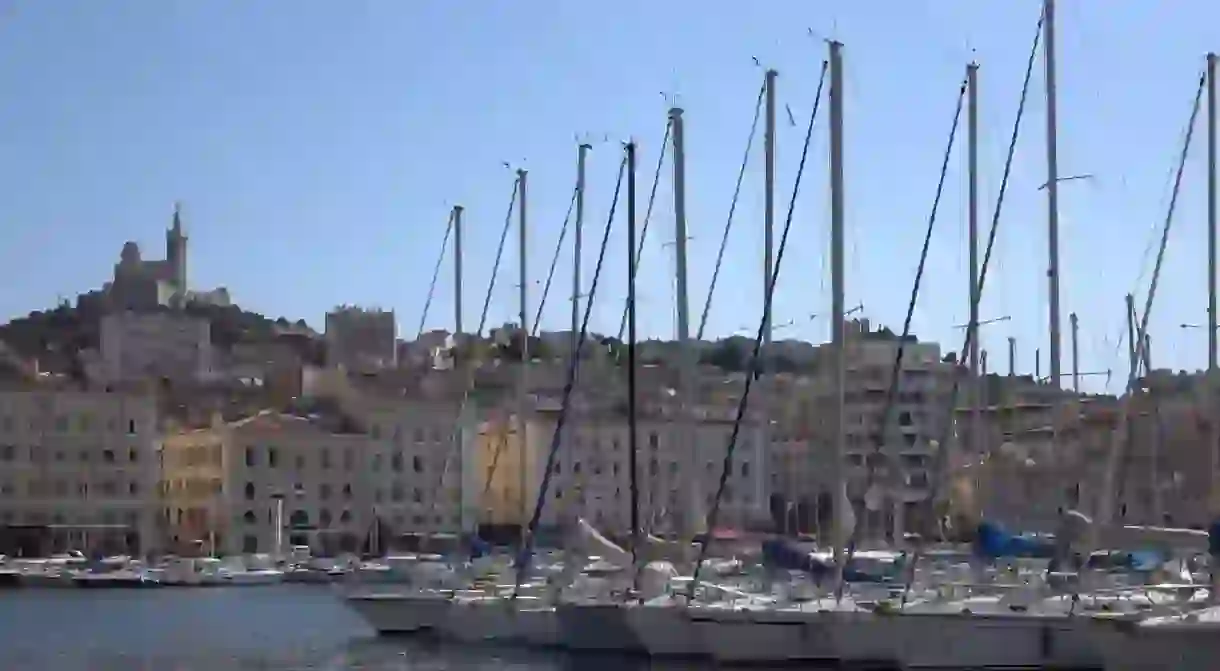History of Marseille's Old Port in 60 Seconds

Ever since the 6th century, there have been fishermen selling their catch in the Old Port (“le vieux port”) of Marseille. Today it’s the city’s beating heart, and a vital part of Marseille.
Brief History
In the year 600, Greek traders arrived in a little Mediterranean inlet which they thought would be an ideal place to set up a trading post. The Old Port, as it’s known today, existed as a vibrant fishing port until the 19th century. From the 1840s onwards, new docks were built towards the west along the coastline of La Joliette to accommodate bigger ships which needed deeper, purpose-built docks. The New Docks are where the cruise ships and big tankers still offload tourists and freight today. The Vieux Port became a marina; it’s where you’ll find the day boats for tourist excursions.
The Cultural Heart of The City
Le Vieux Port is the center of cultural Marseille life. It’s mostly pedestrianized and a meeting spot for locals who walk down from the main thoroughfare, La Canebière, from the train station. La Canebière comes from the word “cannibis” as much of the area was hemp fields in the Middle Ages to make sailing rope. Le Vieux Port is where locals (and tourists) go to drink and watch football and where you’ll find most of Marseille’s restaurants. It’s a great place to try bouillabaisse, the local fish stew, although it’s best to order one or two days in advance with the restaurants.
Cultural Highlights
The basilica Notre-Dame de la Garde watches over le Vieux Port and the train to visit this impressive Roman-Byzantine church leaves regularly from the quayside. People meet friends under the stainless steel art installation, watching themselves upside down in their reflections in the roof. Others head to the giant ferris wheel (“le grand roue de Marseille”) to take in the view over the Mediterranean. Early birds buy the fresh catch from local fisherman in the daily fish market on the quayside (8 a.m. to 1:30 p.m.), while others head out on day trips to France’s natural wonder, Les Calanques or the island fortress of Château d’If. You can watch people get married outside the Town Hall or sit on the steps at the foot of the Intercontinental Hotel Dieu, which used to be Marseille’s hospital for 800 years. There’s something for everyone in le Vieux Port.
Location:













